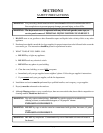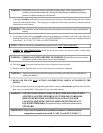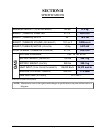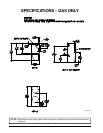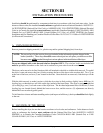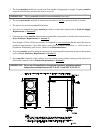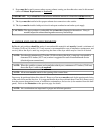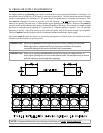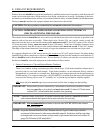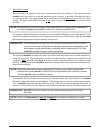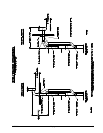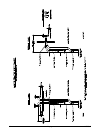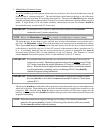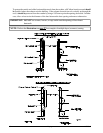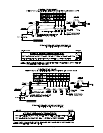
113203-3 Maytag 11
E. EXHAUST REQUIREMENTS
Exhaust ductwork should be designed and installed by a qualified professional. Improperly sized ductwork will
create excessive back pressure, which results in slow drying, increased use of energy, overheating of the dryer,
and shut down of the burner by the airflow (sail) switches, burner hi-limits, or basket (tumbler) hi-heat thermostats.
The dryer must be installed with a proper exhaust duct connection to the outside.
CAUTION: This dryer produces combustible lint and must be exhausted to the outdoors.
CAUTION: IMPROPERLY SIZED OR INSTALLED EXHAUST DUCTWORK CAN
CREATE A POTENTIAL FIRE HAZARD.
The exhaust ductwork should be laid out in such a way that the ductwork travels as directly as possible to the
outdoors with as few turns as possible. When single dryer 10-inch (25.4 cm) vertical venting is used, the
ductwork from the dryer to the outside exhaust outlet must not exceed 35 feet (10.67 meters) or for 10-inch
(25.4 cm) horizontal venting, must not exceed 10 feet (3.05 meters). In the case of multiple (common) dryer
venting, the distance from the last dryer to the outside exhaust outlet must not exceed 15 feet (4.57 meters).
The shape of the exhaust ductwork is not critical as long as the minimum cross-sectional area is provided.
It is suggested that the use of 90º turns in ducting be avoided; use 30º or 45º angles instead. Excluding basket
(tumbler)/dryer elbow connections or elbows used for outside protection from the weather, no more than two (2)
elbows should be used in the exhaust duct run. If more than two (2) elbows are used, the cross section area of
the ductwork must be increased in proportion to the number of elbows added.
1. Exhaust Connections of Top and Bottom Baskets (Tumblers)
There is no common venting connection provided with the dryer. Each basket (tumbler) exhaust duct is
provided with its own back draft damper. Each basket (tumbler) can be exhausted directly outdoors
independently or connected to a common duct. Both single and common ductwork can be rigid ducting or
flexible ducting. For common connections, a kit (P/N 882035) is available from the factory and includes the
necessary flex ducting, elbows, and “Y” assembly, etc., to join the top and bottom exhausts together.
ALL ductwork joints must be taped to prevent moisture and lint from escaping into the building.
IMPORTANT: Exhaust back pressure measured by a manometer at each basket (tumbler) exhaust
duct area must be no less than 0 and must not exceed 0.3 inches (0.74 mb) water
column (W.C.) when both baskets (tumblers) are operating.
NOTE: Common exhaust connections of top and bottom baskets (tumblers) should be installed in
such a manner that the back guards can be removed easily for servicing.
IMPORTANT: It is recommended that exhaust or booster fans NOT BE USED in the exhaust
ductwork system.
NOTE: As per the National Fuel Gas Code, “Exhaust ducts for Type 2 clothes dryers shall be
constructed of sheet metal or other noncombustible material. Such ducts shall be equivalent
in strength and corrosion resistance to ducts made of galvanized sheet steel not less than 26
gauge (0.0195-inches [0.05 mm]) thick.”



